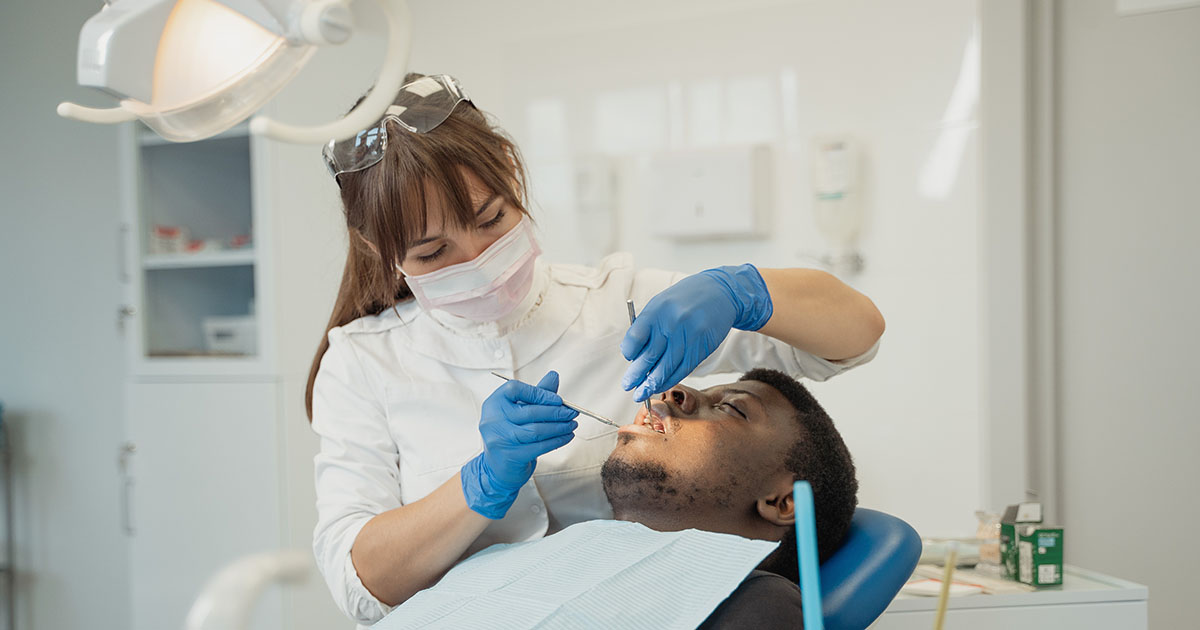4 Important Steps for Choosing Dental Insurance
Let’s face it: Getting dental work done can be really expensive. Even the most basic cleaning can put a dent in your pocketbook. Having comprehensive dental insurance may mean the difference between putting off important oral healthcare or living with gum problems or a mouthful of cavities. However, because of the way certain policies are designed, you may be limited in what work you can get completed. Find out more below!
Getting the right coverage for you takes investigation
Some people put off care because their insurance doesn’t cover the treatment at all, while others do so because they’ve used their maximum coverage for the year. Still, most people agree that having some coverage is better than nothing at all. So how do you start? Here are four key steps to take when buying dental insurance to avoid getting caught with unexpected expenses.
The Basics of Dental Insurance
Dental insurance gives you coverage to help pay for certain dental work. These policies can help insured parties pay for all or part of the work their dentists perform, from routine cleanings and X-rays to more-complicated ones such as implants.
Although dental insurance works a little like health insurance, the premiums are typically much lower—but, of course, there’s a catch. Most health insurance policies cover a hefty percentage of even towering expenses once you’ve paid your deductible, and many have an annual out-of-pocket maximum, along with a $50 to $100 deductible. This is not the case with dental insurance, which usually follows a 100-80-50 coverage structure.
If you are using in-network dentists, dental plans generally pay 100% of preventive care—exams, X-rays, and cleanings. Basic procedures, however, such as fillings, root canals, and extractions, only pay 80%, while major procedures such as crowns, bridges, implants, and gum-disease treatment may only be 50% of the cost. Orthodontia and cosmetic dentistry, which are not deemed medically necessary treatments, are usually not covered at all.1 This means you may still have to pay a hefty price to get your work done.
Older individuals in particular may benefit from the protections offered by dental insurance. Dental insurance for seniors often concentrates on the types of coverage that older adults may need. These include crowns, root canals, dentures, and tooth replacements. While these procedures are not unique to older patients, there is a greater likelihood that seniors will need one or more of them.
Dental policies range from group insurance to individual and family plans, and they come in three categories.
Indemnity Dental Plans
These plans tend to be the most expensive and aren’t as common in the market. They’re also often called “fee-for-service plans.” Insurers cap the amount of money they’ll pay for various procedures—a usual and customary amount set by the American Dental Association. If your dentist charges a higher amount, you’ll have to pay this amount out of pocket.
Most insurance companies that offer indemnity plans require you to pay for the entire cost and file a claim. Once the claim is approved, the insurance company reimburses you for its portion. The main advantage to having a plan like this is that it doesn’t come with a network, so you’re free to choose any dentist you like.2?
Preferred Provider Organization (PPO)
A preferred provider organization (PPO) is one of the most common types of plans available. Dentists join a PPO network and negotiate their fee structure with insurers. If you decide to use an out-of-network provider, you’ll have to pay more out of pocket.
These plans can be more expensive because of the associated administrative costs. Still, they do provide more flexibility than other plans, because they often come with a wider network.3?
Health Maintenance Organization (HMO)
With a health maintenance organization (HMO), you’ll pay monthly or annual premiums but are restricted to the network, and you may have to live within the area where the HMO is offered. It's generally the cheapest of the three types of plans, with dentists agreeing to charge fees for specific services.4?
1. Find Out if You Can Get Group Coverage
The majority of people with dental insurance have benefits through their employer or other group coverage programs such as AARP, Affordable Care Act marketplace health insurance policies, or public programs such as Medicaid, Children’s Health Insurance Program (CHIP), and TriCare for the military.
These plans are generally less expensive than purchasing individual insurance and may also have better benefits. However, you should take a good hard look at the details of even an employer-sponsored plan to decide whether the premiums are worth the money for someone in your situation.
2. If Not, Check Into Individual Policies
Individual policies are more expensive than group policies, whether you’re buying a single policy or one for your entire family, and there are definitely drawbacks with this coverage. They come with more-limited benefits, and insured parties often have to wait before major procedures are approved. If you plan on signing up for a plan just in time because you need implants or a new set of dentures, it won’t fly. Insurers are well aware of that tactic and usually institute a waiting period before you can start using certain benefits, lasting for anywhere between a few months to a year, depending on the procedure.5? However, there are some plans without waiting periods, though they usually cost more.
Before you make a decision, it’s best to comparison shop. Get price quotes and policy details from insurance company websites or talk to a knowledgeable insurance agent.
3. Find Out Which Dentists Are in Your Network
If you have a dentist you like, ask which insurance plans they accept. As mentioned above, indemnity insurance plans allow you to use the dentist of your choice, but PPO and HMO plans limit you to dentists in their networks. If you don’t mind using a new dentist, a PPO or HMO might fit your needs.
Still, it’s wise to be wary. It’s possible that a new dentist you visit will say that you need a great deal of unexpected work. A revealing account on Vox by Joseph Stromberg, the son of a dentist, describes how some in-network dentists may recommend unnecessary procedures to make up for income lost on preventive services, for which they are reimbursed at a low rate by dental insurers. Ask health professionals, neighbors, and friends if they can recommend a local dentist they trust. Then check what insurance and discount plans those practitioners accept.
4. Know What the Policy Covers
It’s important to carefully review the policies you’re considering in order to budget for your dental expenses—both expected and possible emergency costs. For example, AARP Delta PPO Plan B covers exams, cleanings, X-rays, fillings, tooth removals, root canals, gum cleanings, and denture repairs from the time the policy begins. However, you need to wait until your second year to get benefits for dental implants, crowns, gum-disease treatment, complete dentures, and TMJ treatment (which involves problems with the temporomandibular joint, which connects the jaw to the skull). Even then, the benefit is limited to 50% of costs.
If you or your child needs major dental work, know that you’ll likely have to pay a hefty share of the cost. With both group and individual policies, remember that benefits are limited and can vary significantly. Group plans may also have waiting periods, and almost all plans pay only a fraction of costs for major work, so check the details. Your coworkers or friends may be insured by the same company but have a different benefit package from the one you are offered.
The Bottom Line
The bright spot of dental insurance is that coverage is good for preventive care, such as checkups, cleanings, and dental X-rays, even though they may be covered less frequently than eager dentists want you to have them. Adults and children with dental benefits are more likely to go to the dentist, receive restorative care, and experience greater overall health. Purchasing insurance may well motivate you to get preventive care and avoid more-expensive and uncomfortable procedures.
When purchasing individual dental insurance, be aware that major procedures may not be covered in the first year, and even then the benefit is likely to be only half of what the dentist charges. You’ll need to set aside money in a health savings account (HSA) or personal fund so you’re not caught short if you need major work.
This article was originally published on www.investopedia.com









